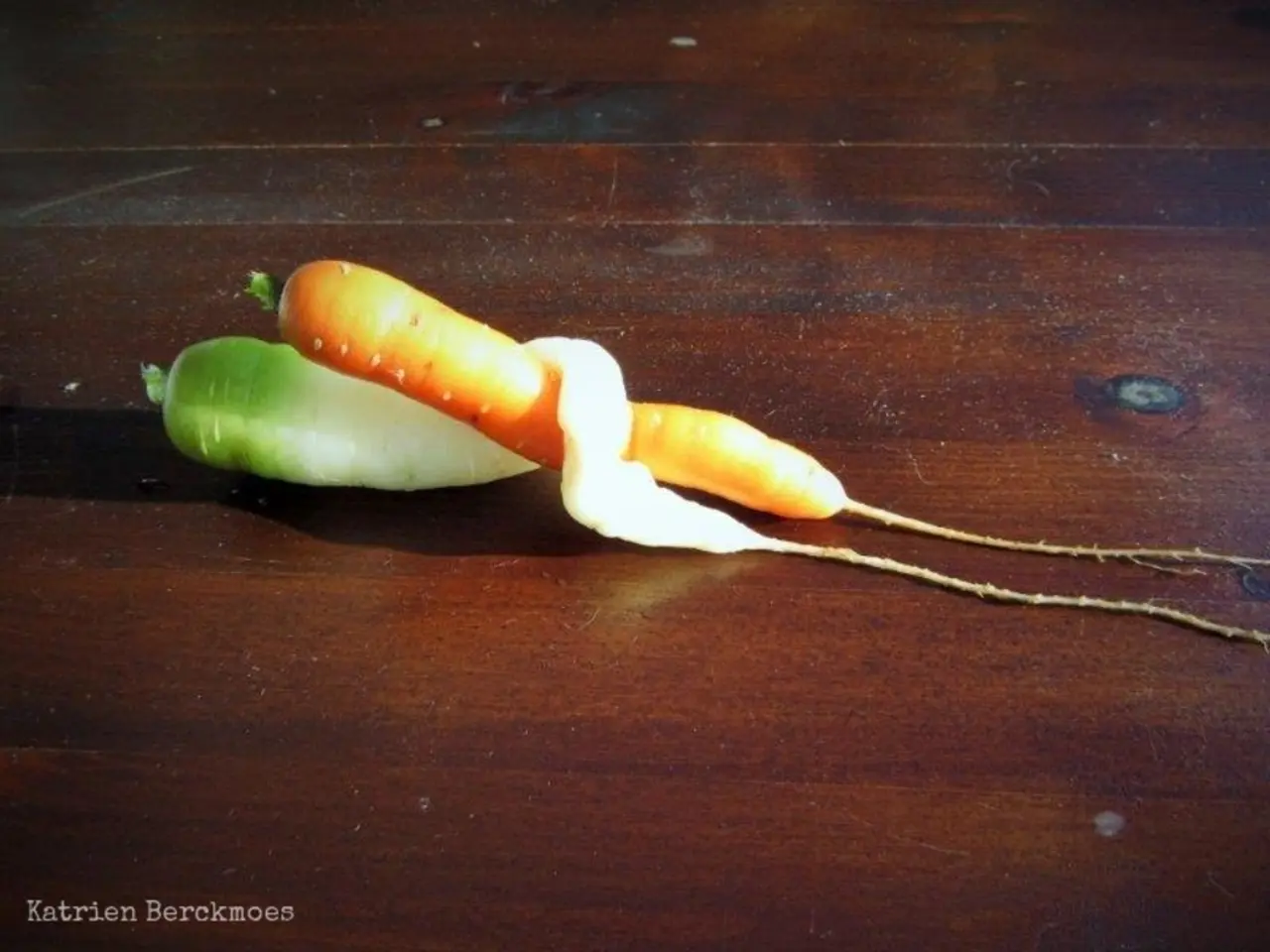Radish Plants: Nutrient Uptake and Utilization within Soil Context
Growing Radishes: A Comprehensive Guide
Radishes are a popular vegetable known for their crisp texture and peppery flavour. Here's a guide to help you grow radishes successfully in your garden.
Planting Radishes
Radishes prefer cool temperatures and can be planted at two key times: spring and fall. For a spring crop, plant seeds 4 to 6 weeks before the last spring frost. For a fall crop, plant seeds 4 to 6 weeks before the first fall frost.
To plant radishes, prepare the bed on a dry day, breaking down any large clumps, removing weeds, and raking the soil to a fine tilth. Seeds should be sown individually, covered lightly with soil, and watered well using a watering can with the rose attached.
Soil Conditions
Radishes thrive in loose, fertile, well-draining soil with a neutral pH (6.0 to 7.0). A soil depth of about 15 cm (6 inches) is sufficient. Consistently moist soil, but not waterlogged, is ideal to support growth and prevent tough or woody roots. Avoid heavy nitrogen feeding, as excess nitrogen promotes leafy growth over root development.
Growing Radishes
Radishes grow well in full sun but will also grow in partial shade, requiring a sunny spot that gets at least 6 hours of sun a day. The soil temperature should range from 10°C to 24°C (50°F to 75°F) for optimal germination and growth. Seeds should be sowed about 0.5 to 1 cm deep. Thin the plants to 1-2 cm (or about 1 inch) apart for best root growth.
Companion Plants
Radishes are good companion plants for peas, cucumbers, spinach, dill, chives, mint, and leeks. Radishes help repel cucumber beetles that feed on cucumber leaves and protect other vegetables from aphids, slugs, cabbage worms, and other predators.
Harvesting Radishes
Radishes are best eaten when young to avoid a woody texture and bitter flavor. They are usually ready after four weeks.
Tips and Tricks
- Keep the soil moist and remove any weeds that compete with the radishes for water and nutrients.
- Radishes and spinach can be interplanted as they are both grown in cooler temperatures, and as radish bulbs grow, they break up the soil, making room for spinach roots.
- Chives and radishes are delicious when eaten together, and their purple flowers attract bees and other pollinators, while their aroma deters damaging insects.
- Mint is great at repelling flies, fleas, and spiders, and can also help deter grazing animals like deer.
- Leeks protect radishes and other vegetables from aphids, slugs, cabbage worms, and other predators.
- Radishes and cucumbers do not compete for space, as radishes grow beneath the soil and cucumbers grow above ground.
With these tips, you're now well-equipped to grow radishes in your garden. Enjoy the crisp, peppery flavour of home-grown radishes!
[1] Radish Growing Guide [2] Radish Care [3] Radish Germination [4] How to Plant Radishes [5] Radish Growing Tips
- Maintaining soil health is crucial for growing radishes, as they thrive in loose, fertile, well-draining soil with a neutral pH.
- Science plays a significant role in understanding the health-and-wellness benefits of consuming radishes, which are known for their crisp texture and peppery flavor.
- Adopting a lifestyle that includes gardening can lead to a more fulfilling home-and-garden experience, as growing radishes can be both rewarding and enjoyable.
- A well-planned fitness-and-exercise routine, along with following the right gardening practices, can help you stay active and maintain a healthy nutrition while growing vegetables like radishes.





